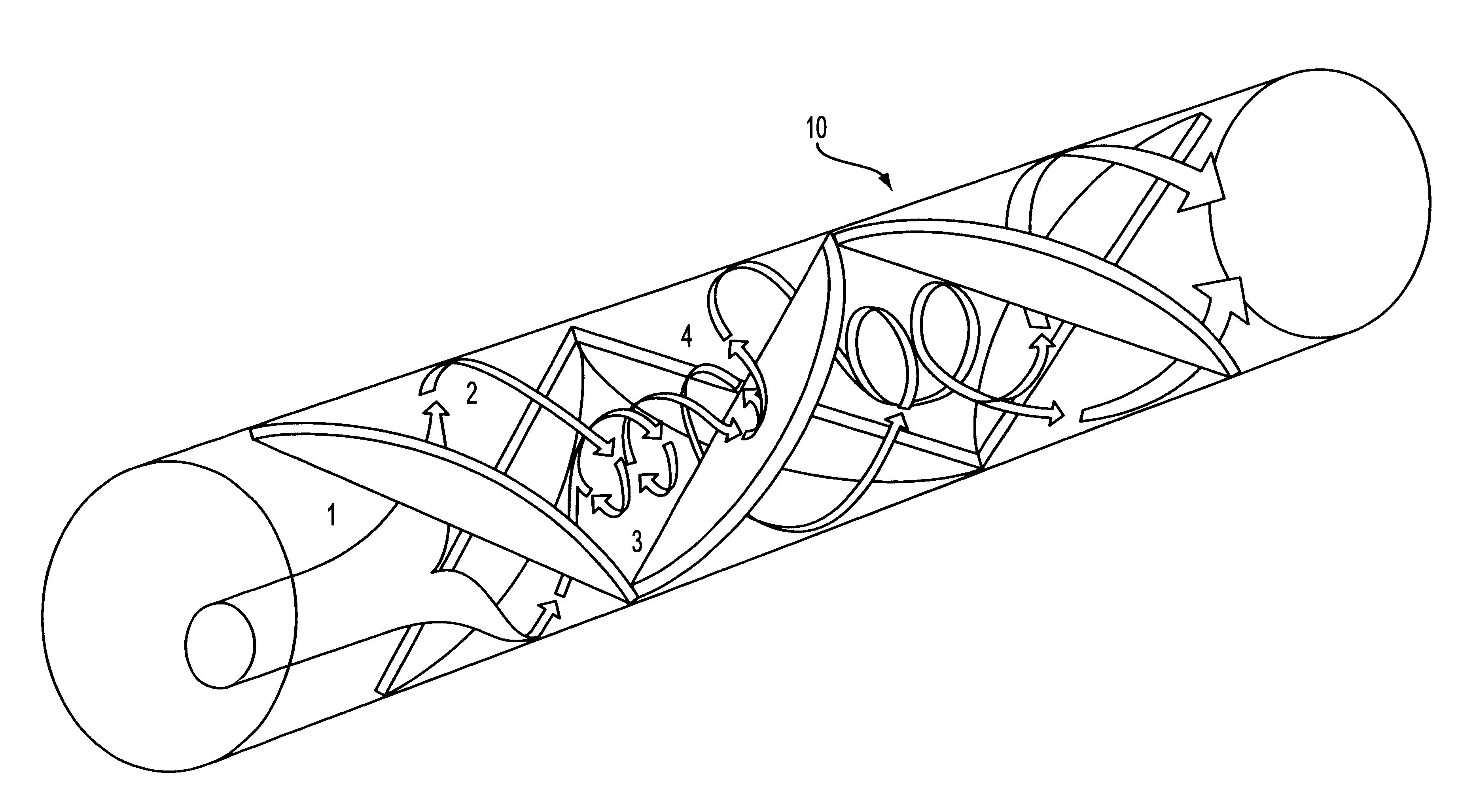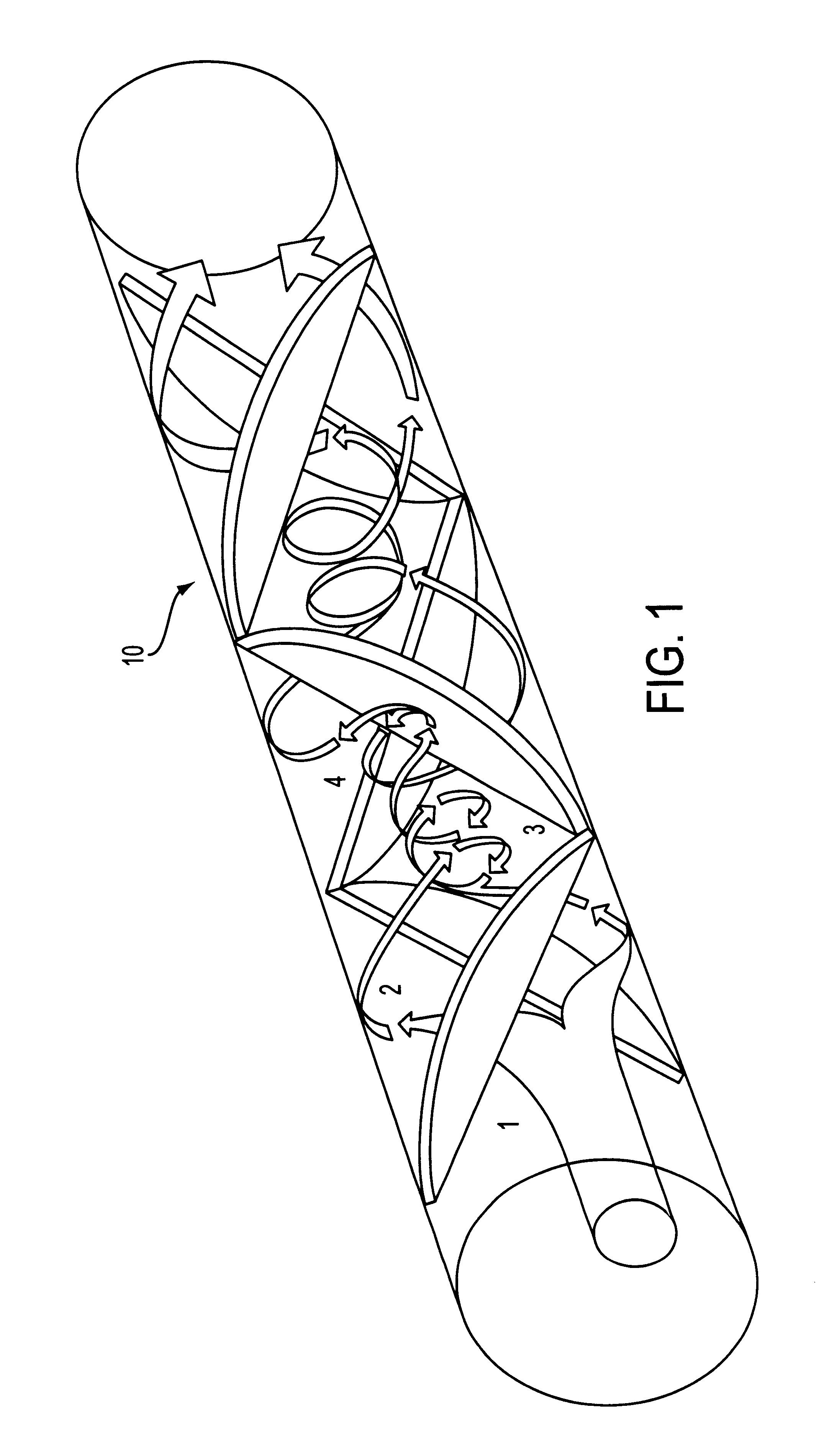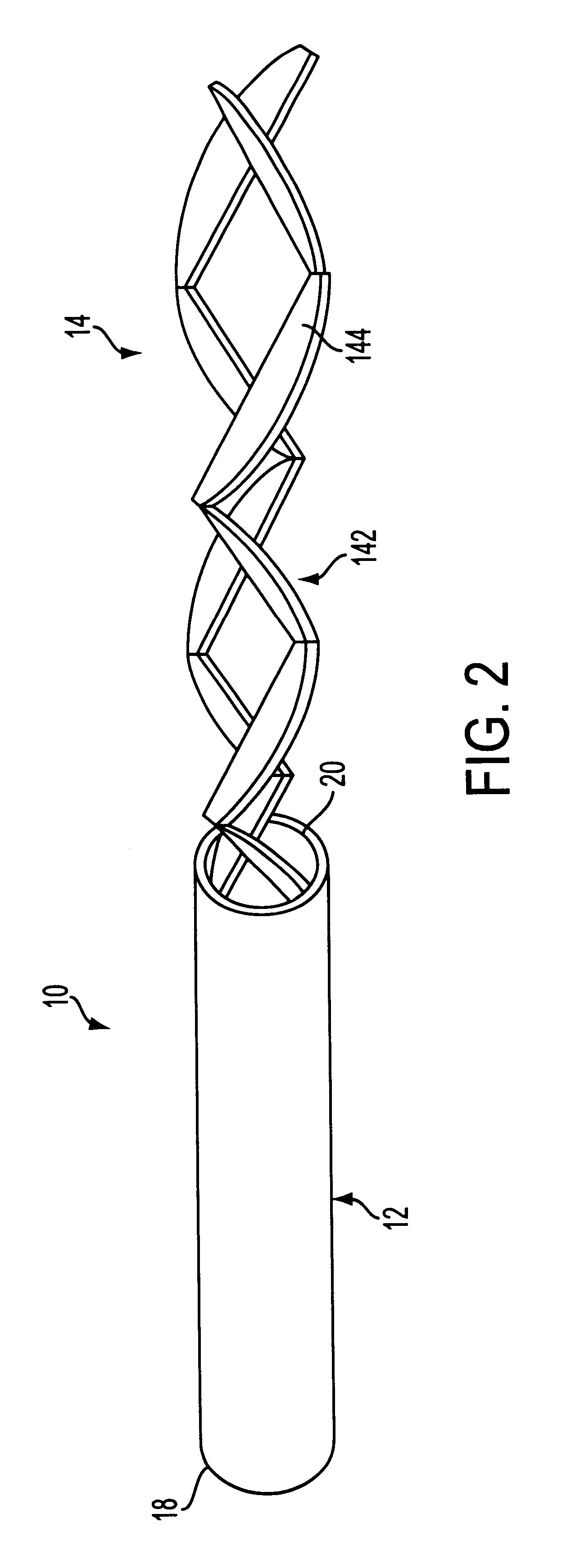Apparatus and method for preparing microparticles
a microparticle and apparatus technology, applied in the field of preparation of microparticles, can solve the problems of large equipment, large yield loss, and unpredictable scale-up, and achieve the effects of narrow or tighter target microparticle size range, large yield loss, and large yield loss
- Summary
- Abstract
- Description
- Claims
- Application Information
AI Technical Summary
Benefits of technology
Problems solved by technology
Method used
Image
Examples
example 1
Static Mixer Tests
A test program was conducted using a variety of static mixers. A static or motionless mixer consists of a conduit or tube in which is received a number of static mixing elements. Static mixers provide uniform mixing in a relatively short length of conduit, and in a relatively short period of time. With static mixers, the fluid moves through the mixer, rather than some part of the mixer, such as a blade, moving through the fluid. Flow through one type of static mixer is illustrated in FIG. 1. A pump (not shown) introduces a stream of one or more fluids into a static mixer 10, as shown generally at 1. The stream is split and forced to opposite outside walls, as shown generally at 2. A vortex is created axial to the centerline of static mixer 10, as shown generally at 3. The vortex is sheared and the process recurs, but with the opposite rotation, as shown generally at 4. The clockwise / counterclockwise motion ensures a homogeneous product.
One example of a static mixer...
example 2
Preparation of Risperidone Microparticles Using a Manifold
Microparticles comprising risperidone were prepared at the 20-kilogram scale. The 20 Kg process (8 Kg of active agent and 12 Kg of polymer) provides a theoretical drug loading of the microparticles of 40% (8 Kg / 20 Kg.times.100%).
The polymer solution was prepared by dissolving 12.0 Kg of MEDISORB.RTM. 7525 DL polymer (Alkermes, Inc., Blue Ash, Ohio) in 60 Kg of ethyl acetate (Merck). The polymer was added to the solvent at 25.degree. C. in a stainless steel reactor. The temperature of the tank was raised to 37.degree. C. to facilitate dissolution. The vessel was agitated for at least 16 hours to dissolve the polymer. Once dissolved, the solution temperature was reduced to 25.degree. C.
The drug solution was prepared by dissolving 8.0 Kg of risperidone base (Janssen Pharmaceutica, Beerse, Belgium) in 25.3 Kg of benzyl alcohol (Merck) at 25.degree. C. in a stainless steel reactor. The organic phase was prepared by adding the drug...
example 3
Methods for Preparing Microparticles
As exemplified by the examples discussed above, methods for preparing microparticles in accordance with the present invention will now be described in more detail. In one embodiment of the present invention, a first phase, comprising an active agent and a polymer, is prepared. In one embodiment of the present invention, the first phase is prepared by dissolving the active agent in a first solvent to form an active agent solution. The polymer is dissolved in a second solvent to form a polymer solution. The active agent solution and the polymer solution are blended to form the first phase. In a particularly preferred embodiment, the active agent is selected from the group consisting of risperidone, 9-hydroxyrisperidone, and pharmaceutically acceptable salts thereof. In such an embodiment, a preferred first solvent is benzyl alcohol, and a preferred second solvent is ethyl acetate.
In another embodiment of the present invention, the first phase is pre...
PUM
| Property | Measurement | Unit |
|---|---|---|
| residence time | aaaaa | aaaaa |
| residence time | aaaaa | aaaaa |
| diameter | aaaaa | aaaaa |
Abstract
Description
Claims
Application Information
 Login to View More
Login to View More - R&D
- Intellectual Property
- Life Sciences
- Materials
- Tech Scout
- Unparalleled Data Quality
- Higher Quality Content
- 60% Fewer Hallucinations
Browse by: Latest US Patents, China's latest patents, Technical Efficacy Thesaurus, Application Domain, Technology Topic, Popular Technical Reports.
© 2025 PatSnap. All rights reserved.Legal|Privacy policy|Modern Slavery Act Transparency Statement|Sitemap|About US| Contact US: help@patsnap.com



